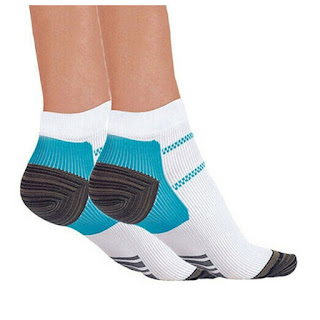Normal Causes of Heel Pain (Plantar Fasciitis)
There are many reasons for pain
straightforwardly under the heel. Maybe the most widely recognized reason is
called plantar fasciitis. This is likewise regularly known as a heel spike.
Anything that name you call it, the assessment and the treatment continues as
before. This conversation will incorporate the life structures of heel pain the
treatment options and what you can expect during your recuperation.
The healing plantar fasciitis band is a
tight ligamentous structure on the lower part of the foot, which assists with
holding up the arch. It starts straightforwardly under the heel and is joined
deep down (calcaneus). At the beginning under the heel it is around 2cm in
width. It then, at that point, goes out towards the toes and expands out. Not
long prior to arriving at the toes, it parts into 5 slips with each slip going
into a toe. You can see that the most vulnerable mark of the whole construction
is at its starting point in the heel where it is so little.
The hard arrangement of the foot
fills in as the underlying structure, which supports your arch. On the off
chance that under any condition this structure starts to straighten out
(pronation), the plantar fascial band needs to help by opposing this unusual
smoothing. Since the beginning of the fascial band under the heel is its most
fragile point, the best pressure will be communicated to this site.
As you walk or run there will be
a tedious mechanical pressure applied to this connection. This unusual pressure
will ultimately prompt a fiery response around the beginning of the fascial
band where it is being "pulled away" from the bone. A significant
part of any incendiary response is enlarging. In the present circumstance the
expanding is subtle on a superficial level, however it is available around the
fascial band. There are many little nerves going through this region and the
expanding presses proposals nerves bringing about the pain you feel.
While trying to reinforce the
connection of the plantar fascial band, your body will really set down bone as
a reaction to this constant disturbance. The development of this "heel
spike" is the final product of plantar fasciitis and is frequently
asymptomatic.
The pain related with plantar
fasciitis is ordinarily genuinely explicit. A great many people portray the
pain as a throbbing "snugness" with infrequent sharp pain "like
a nail" under the heel. The pain is the most terrible normally when they
initially get up toward the beginning of the day or subsequent to sitting for
quite a while.
The initial not many advances are
unbearably painful. The pain will diminish slowly as the foot "heats
up" which might be somewhere in the range of 4-5 stages to 45 minutes. Another
normal grievance is that the pain again increments in the wake of representing
quite a while.
What makes plantar fasciitis
abruptly discharge up? As we examined in the reasons for fasciitis, anything
which expands the weight on the plantar belt. Expanded pressure might come from
an increment in exercises, for example, a sprinter expanding his/her mileage.
It might come from an exhausted pair of shoes, which never again can support a
strange underlying deformation. It additionally may happen with an expansion in
weight and generally a patient will relate a new weight gain of 5-10 pounds.
To precisely analyze plantar fasciitis relief, an itemized clinical history is acquired, as well as an exhaustive
assessment of your foot to see what regions and developments are delicate.
Ordinarily your walk or stride is analyzed, and X-Rays are taken in the
workplace to decide the hard design of the foot, to inspect for any heel prods,
breaks, bone cancers, ligament changes, and some other pathology.
Any fruitful treatment should
zero in on diminishing the weight on the plantar fascial band and
simultaneously diminishing the expanding around it. Your treatment will zero in
on the two of these areas at the same time. To start with, the hard design of
your foot should be supported to diminish the weight on the plantar fascial
band. Second, the aggravation, which prompts the tension and pain of the
nerves, should be diminished to calm the pain.



Comments
Post a Comment